Description of the flavor of Kenya AA AB grade coffee beans based on the characteristics of Kenyan SL28 SL34 coffee beans
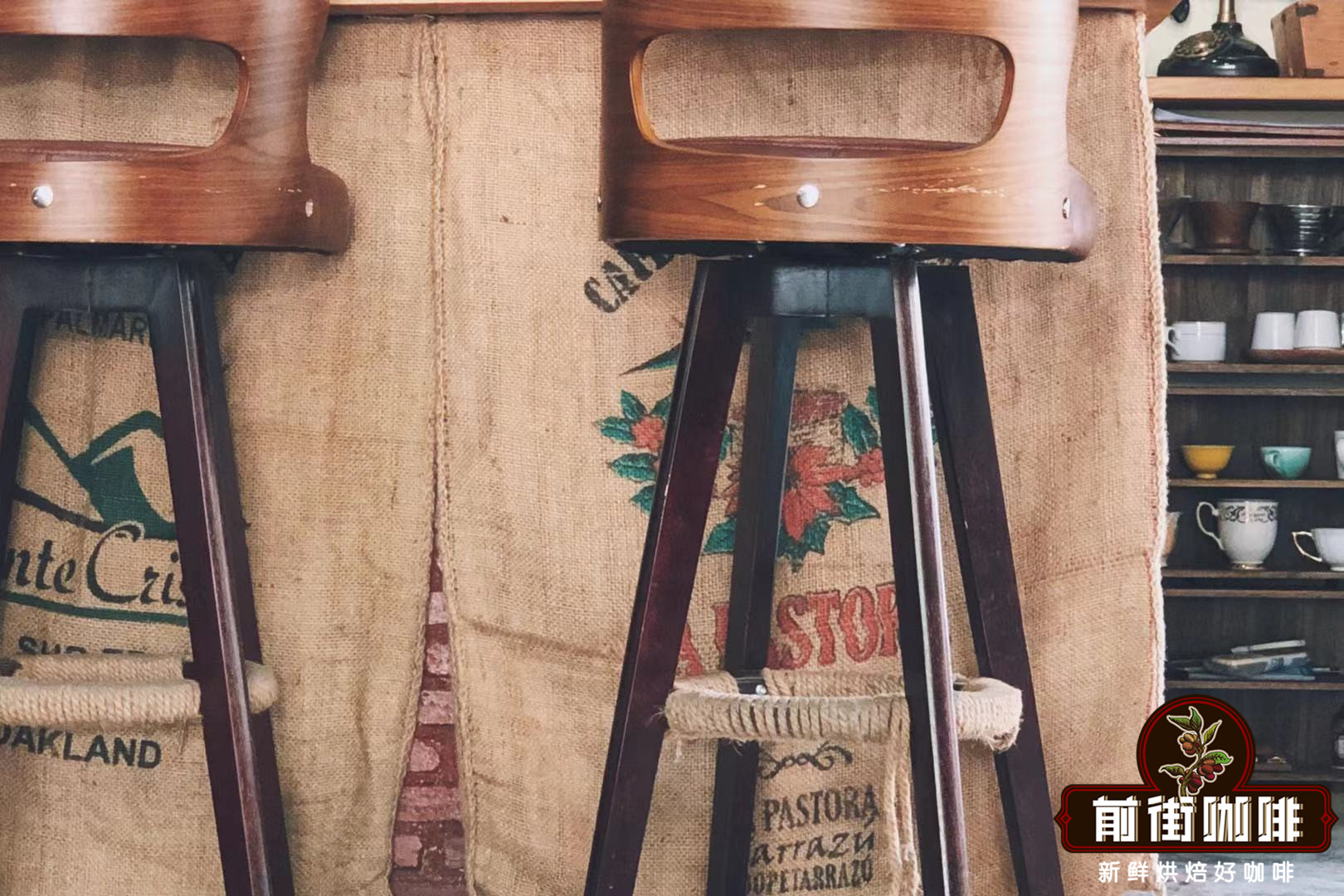
Professional coffee knowledge exchange more coffee bean information please follow the coffee workshop (Wechat official account cafe_style)
Kenyan coffee beans occupy the African boutique coffee market with extremely pleasant acidity, but the Kenyan coffee cultivation history is not longer than that of other producing areas, but it has always maintained a stable coffee bean quality. Qianjie Coffee believes that this is due to the Kenyan endemic coffee varieties SL28 and SL34, so in this article, Qianjie Coffee will take a look at the Kenyan endemic coffee bean varieties.
What are the characteristics of the Kenyan SL28 coffee variety?
The emergence of SL28 coffee beans is due to the fact that the Kenyan government attaches great importance to the coffee industry, so in the 1930s the Kenyan government set up a special laboratory responsible for the selection of coffee varieties for the future cultivation in Kenya, because at that time, the ancient tin card varieties had very poor resistance to diseases and insect pests and were difficult to feed, and the coffee planting history in Kenya was not long, which meant that coffee selection was very important. After selecting the species, it can be promoted globally for coffee farmers from top to bottom, and avoid the trouble of insect pests.
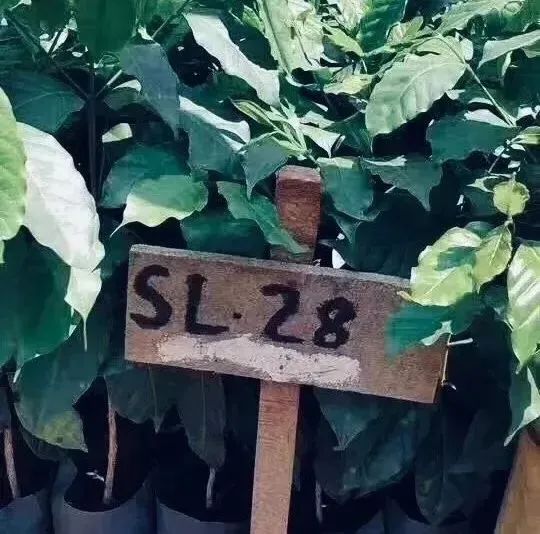
This laboratory is now the famous "Scott Laboratory" in Kenya. From 1935 to 1939, 42 individual coffee species from different sources were selected to study their yield, quality, drought resistance and disease resistance, and named after the laboratory capital letter "SL".
According to Qianjie Coffee, SL28 was first selected from a single plant of drought-resistant tree species from a source of Tanganyika in 1935. According to historical documents, during a visit to Tanganyika (present-day Tanzania) in 1931, AD Trench, a coffee breeder at Scott Lab, found a variety in Moduli that seemed to be tolerant to drought and diseases and insect pests, so he collected seeds and took them back to Scott Lab, where they were later proved to be drought resistant and were widely planted until they were replaced by their offspring SL28.
And to this day SL28 is one of the most famous and respected varieties in Africa. It has spread from places chosen in Kenya in the 1930s to other parts of Africa (especially the Arab growing areas in Uganda) and now to Latin America. SL28 varieties are suitable for middle and high altitude areas and have the ability of drought resistance, but they are very sensitive to the main diseases of coffee. SL28 is found in many parts of Kenya, and even though it is 60-80 years old, it is still very high-yielding.
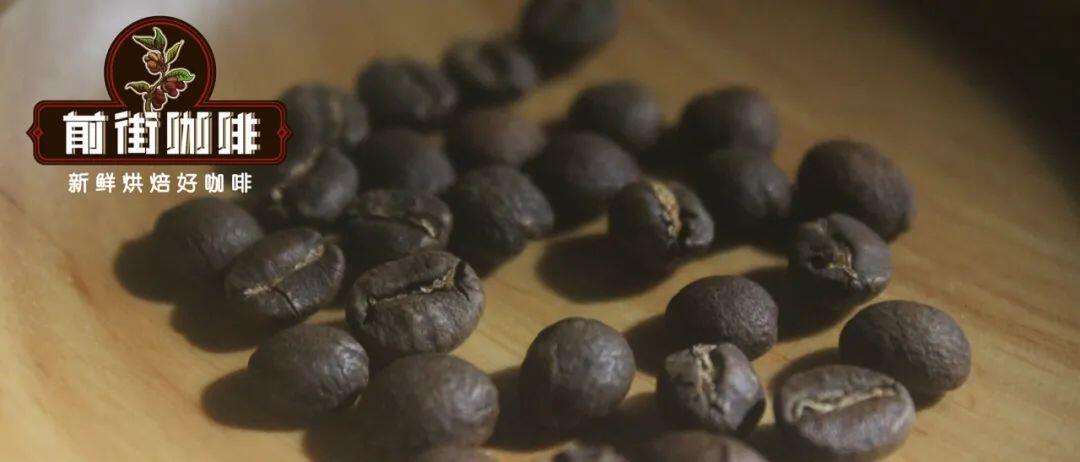
And according to Qianjie Coffee, genetic tests in recent years have also confirmed that SL28 belongs to the bourbon gene group. Therefore, the appearance of SL28 coffee beans is similar to that of bourbon varieties, with a round and thick body. (figure)
What are the characteristics of the Kenyan SL34 coffee variety?
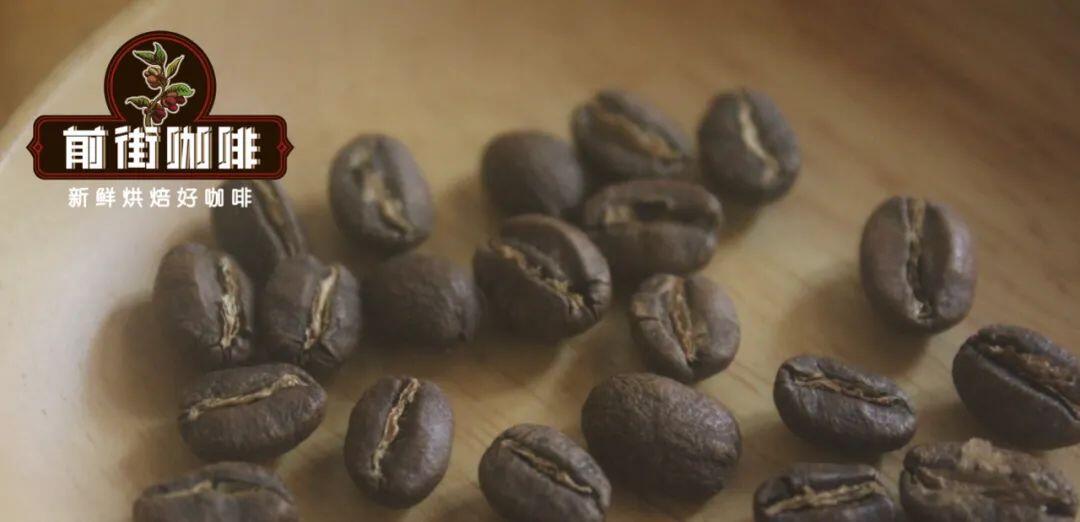
SL34 was first chosen as a "French missionary" (bourbon species) from the Loresho estate. However, according to Qianjie coffee search data, it is known that genetic testing of this variety of coffee beans has confirmed the gene group of iron pickup, and its plant performance characteristics are also similar to those of iron pickup. Therefore, it is considered that the selection of SL34 comes from iron pickup. Because SL34 is close to the tin card variety, the coffee bean looks long, oval and flat on the side. (figure)
What is the difference between SL28 and SL34 coffee bean flavor?
After understanding the characteristics of these two kinds of coffee beans, Qianjie Coffee will share the differences between the two coffee beans. According to Qianjie, SL-28 has a higher reputation, higher SL-34 harvest and lower altitude. According to botanists in SL laboratory, SL28 and SL34 are genetic variants. Among them, SL28 has the mixed pedigree of Moka and Yemeni Tibica. The goal of cultivating SL28 was to mass produce coffee beans with high quality and resistance to diseases and insect pests. Although the yield of SL28 was not as large as expected, it has been spread to this day because of the copper leaf color and broad bean-shaped beans with great sweetness, balance and complex flavor, as well as significant citrus and black plum characteristics.
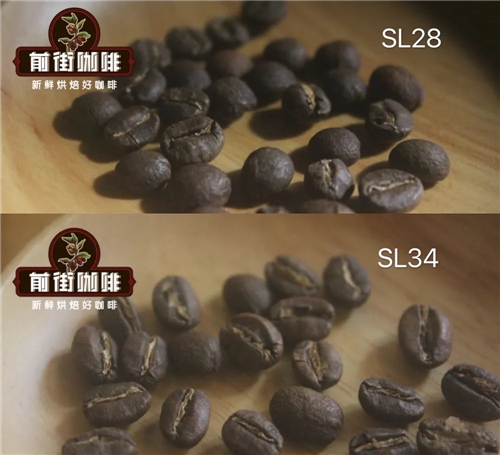
Qianjie Coffee thinks that the flavor of SL34 is similar to that of SL28, except for its complex acidity and great sweetness, it tastes heavier, more full-bodied and cleaner than SL28. SL34 has bourbon and more Tibica blood. Therefore, at present, many of the Kenyan coffee beans in Qianjie coffee shops are mixed beans of SL28 and SL34 varieties.
Secondly, according to Qianjie Coffee, Kenya also developed Ruiru and Batian varieties of coffee beans, these two varieties of coffee beans are also widely grown in Kenya, then Qianjie Coffee will share the characteristics of these two kinds of coffee beans.
Ruiru11
Ruiru appeared after SL28 and SL34, and Qianjie learned that it was in the 1970s, when Ruiru began to try to cultivate different CBD and rust-resistant varieties. The result is Ruiru11, which was released in the 1980s. High yield, CBD and antirust properties seem to be the solution to all coffee production problems in Kenya.
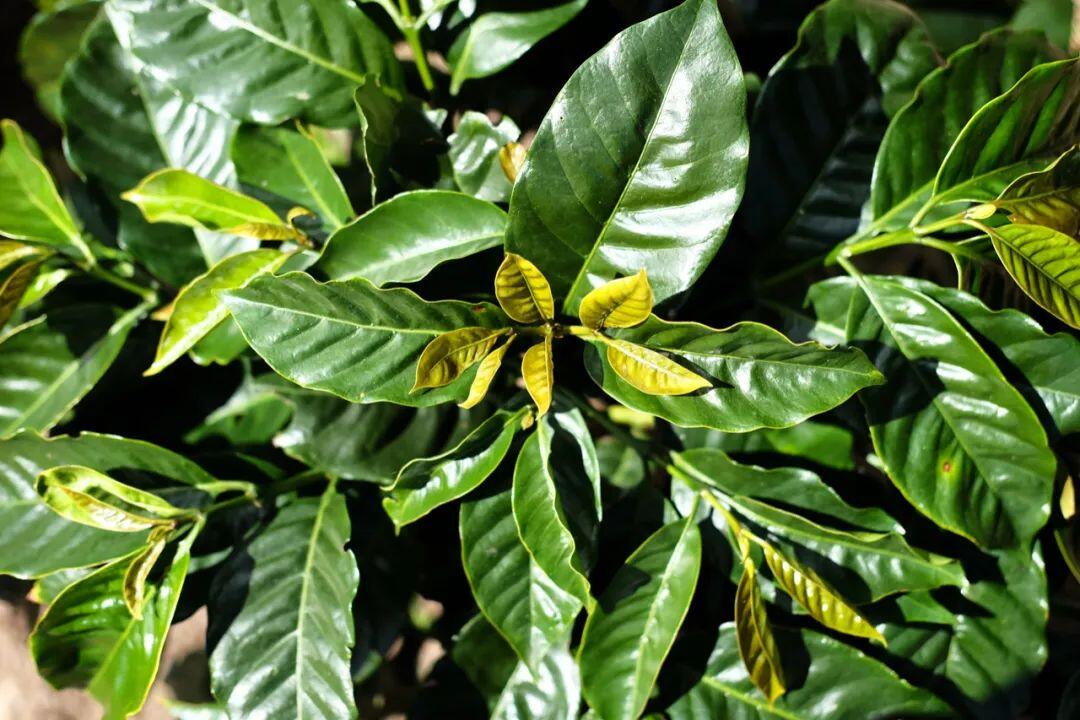
Batian
The Batian variety was launched by the Coffee Research Institute (CRI) on September 8, 2010. it is also the latest variety offered in Kenya. It is a further experiment based on lessons learned from Ruiru11. Genetically speaking, it is essentially selected from the backcross between SL28 and SL34, and is closer to SL28 than Ruiru 11. Thus, this eliminates the elements of the problematic Robusta varieties of coffee beans, thus improving the quality of cup testing.
Kenya Coffee Bean grading system
In addition to coffee varieties, the difference between Kenyan coffee beans and coffee beans in other producing areas is the grading system of Kenyan coffee beans. For example, you can see that there are AA, AB and PB grades of Kenyan coffee in front street coffee shops. Although they are "graded", will the AA grade necessarily taste better than the AB grade?
According to Qianjie Coffee, Kenya's coffee beans are graded mainly by size, and the difference between AA and AB is only the difference in size. As for whether it is good or not, Qianjie coffee has come to the conclusion that Kenyan coffee beans of both AA and AB grades are very delicious coffee. The differences in taste among different producing areas may mainly come from the producing area, altitude, planting conditions and other factors. But the Kenyan coffee of AA and AB grade must be the most guaranteed coffee.
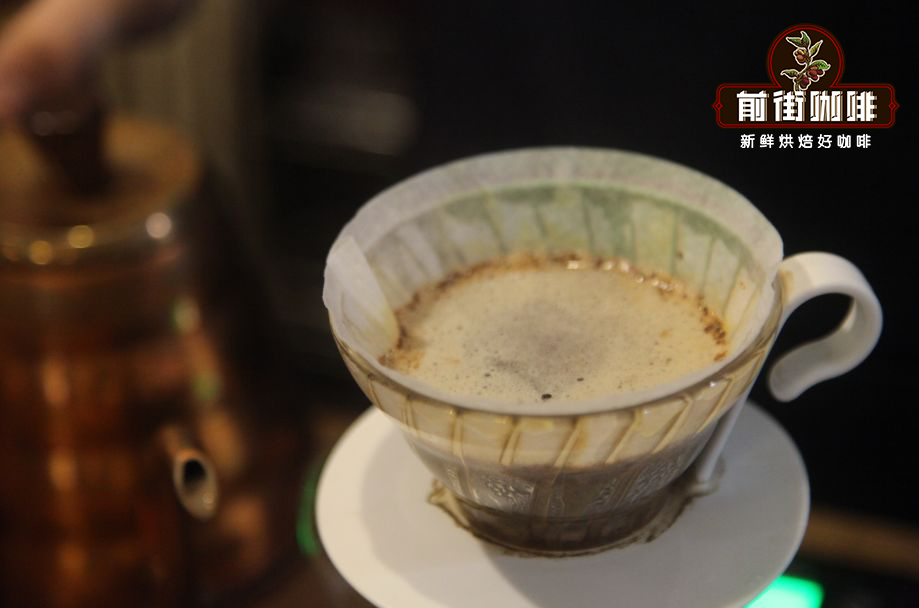
From the above, these grades are only the distinction of bean size, and the most famous coffee treatment of Kenyan coffee beans is K72 water washing treatment, so the best quality coffee beans in Kenya are basically washed. Washed coffee is roughly divided into eight grades:
E:Elephant Bean, also known as Elephant ear, is a flat bean with a particle size of more than 19 mesh.
AA: particle size 17 to 18 mesh
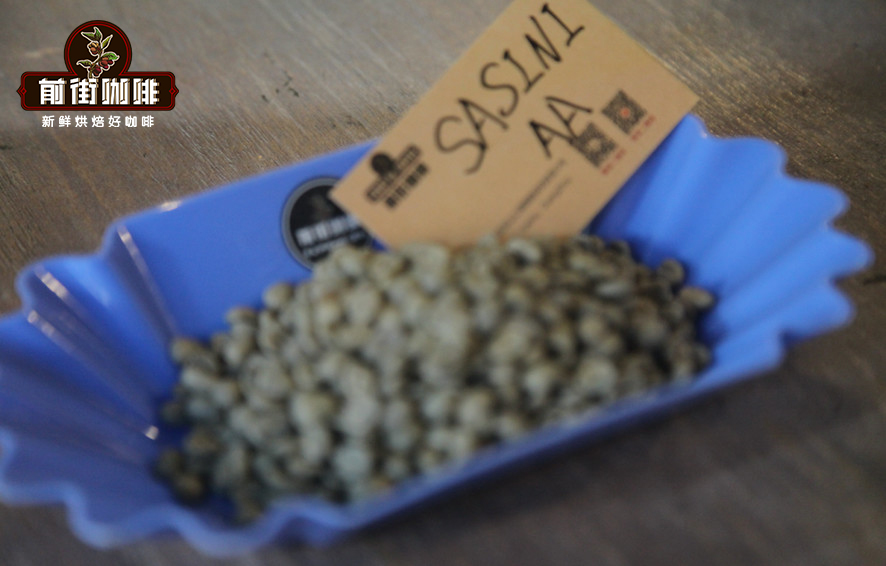
AB: particle size 15 to 16 mesh, accounting for the majority of production
TT: lighter beans blown by an airflow filter from AA and AB beans
C: the particle size (Screen Size) is less than AB / 14 mesh, which is too small to be included in the boutique grade.
T: from C-grade beans (less than 14 mesh), the lighter beans blown by an airflow filter, that is, the size and density are too small to be included in the boutique grade.
PB:Peaberry, which means round beans, is not classified by size but by appearance. It has nothing to do with flavor weight and accounts for about 10% of the total output.
UG: those who do not meet the above criteria
Secondly, there are also low-quality sun-dried coffee beans, which are not washed in Kenyan style because of their poor quality and are generally used in the Kenyan domestic market. This bean grade is called Machiavel39 umbrellas buni.
MH:M'buni Heavy = large beans
ML:M'buni Light = small beans
In addition, Qianjie Coffee wants to emphasize that the standard of "raw bean grading system", which is still in use today, was issued by government units in 1938, even 40 years before the birth of the concept of "boutique coffee". Therefore, Kenya has already had a new concept of coffee bean grading standard, but it is still more common by size classification standard.
Here are the current new coffee classification standards in Kenya:
According to Qianjie Coffee, Kenyan coffee research institutions and local industries often use a set of coffee bean quality grading procedures developed by Kenya Coffee Research Institutes, which are graded according to raw bean quality, ripe bean quality and cup test quality.
Raw bean quality: judge the appearance size, color and defects of raw beans in the project.
Cooked bean quality: subdivide the central crack condition, the cooked bean condition, and the defective bean.
Cup test quality: the score is given by acid quality, alcohol thickness / texture, flavor and negative defects.
According to the score of three facets, coffee beans are divided into 1 to 10 grades, with level 1 being the best and level 10 being the worst.
The above is the relevant knowledge about the varieties and grading of Kenyan coffee beans compiled by Qianjie Coffee. I hope it can help coffee fans who want to know about it. Next, Qianjie Coffee will share the flavor and roasting data of Kenyan coffee beans.
Front street coffee Kenya Azaria coffee beans
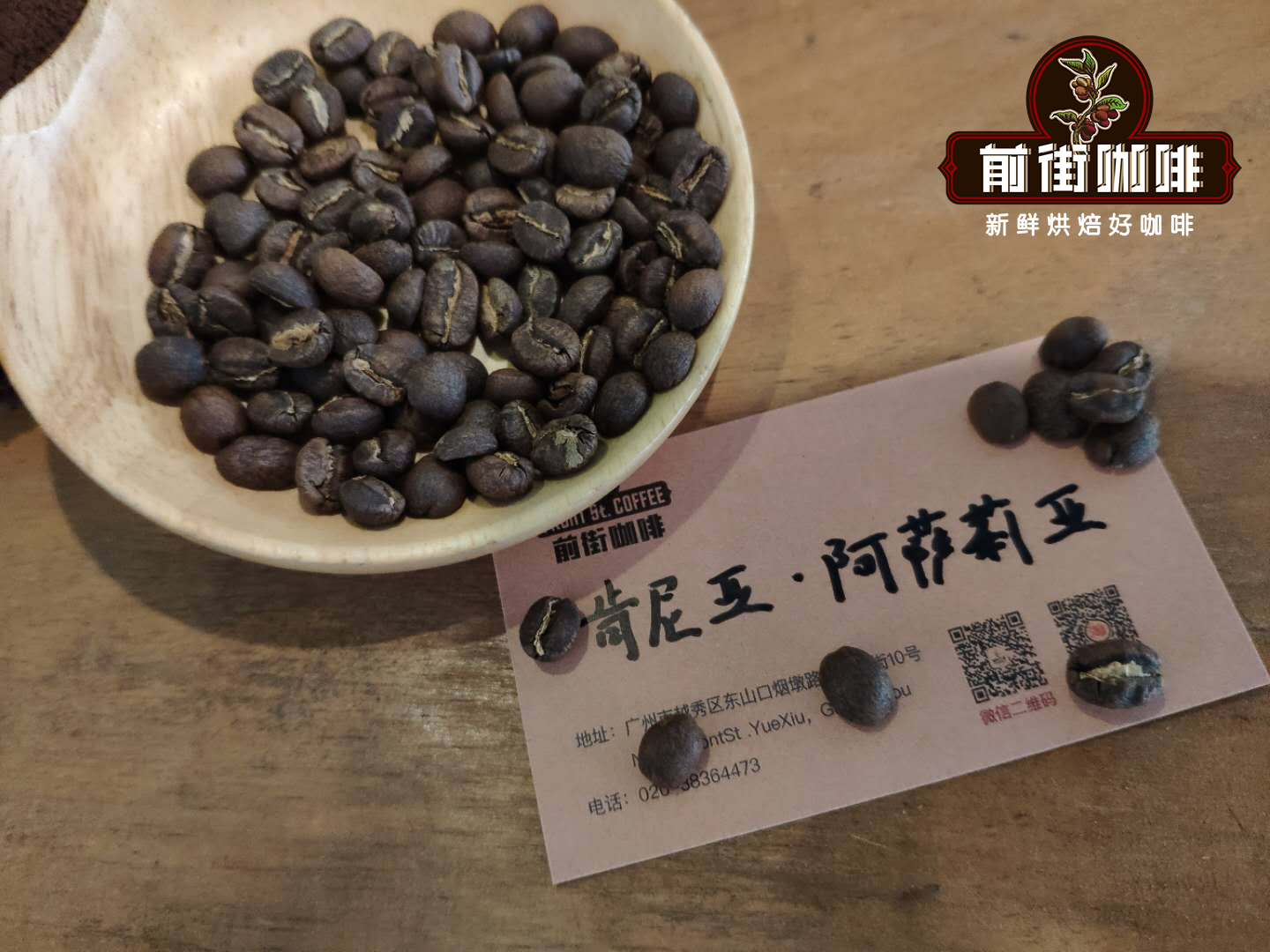
Country: Kenya
Production area: Asali (Honey processing Plant)
Altitude: 1550-1750m
Variety: SL28,SL34
Treatment method: 72 hours washing treatment
Flavor: Sydney, black plum, brown sugar, virgin fruit, Brin
Front Street Coffee PB Coffee beans in Sassini Estate, Kenya
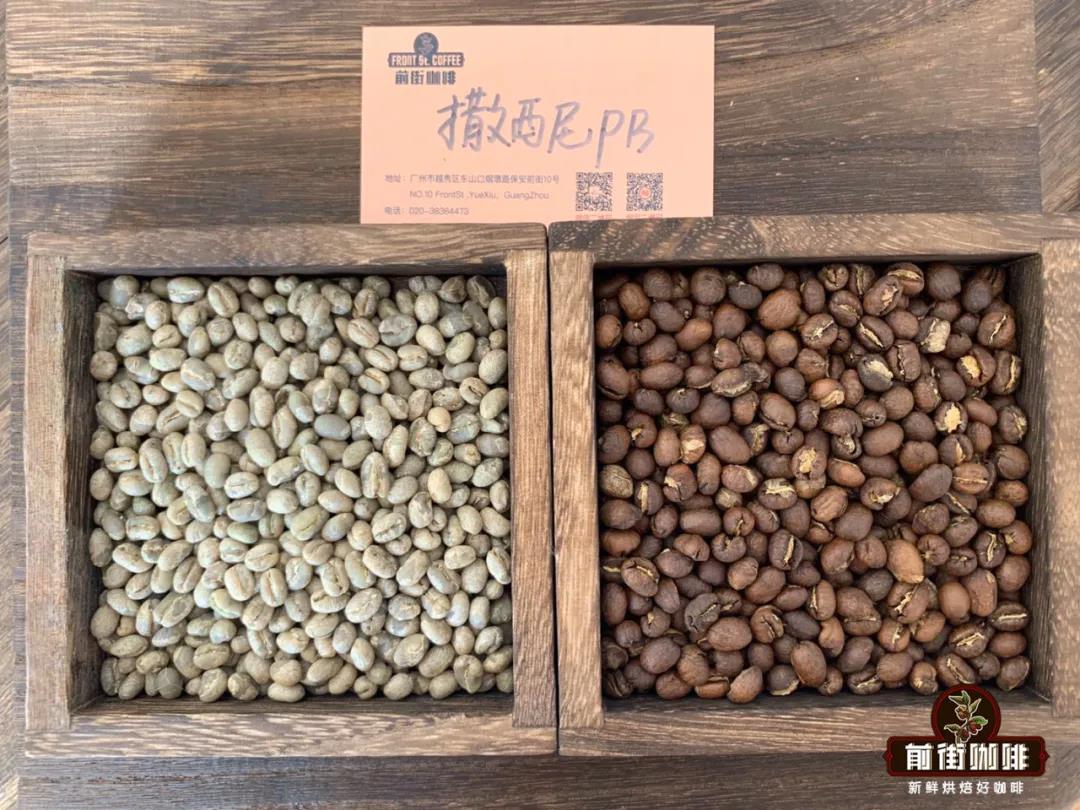
Country: Kenya
Producing area: Sassini Manor
Altitude: 1680m
Variety: SL28,SL24,riuru
Treatment method: 72 hours washing treatment
Flavor: Virgin fruit, almonds, black plums, honey, grapes
"Qianjie Coffee Baking parameters sharing"
Asalia coffee beans, Kenya:
This bean is full and round, and Qianjie coffee is roasted lightly in order to fully show its bright and mellow acidity.
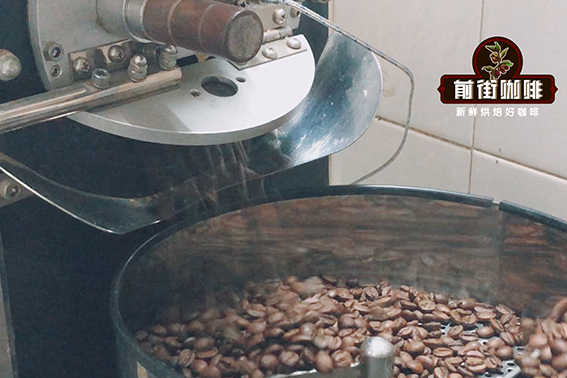
Yangjia 800N semi-direct fire, bean dosage 480g: furnace temperature to 160 degrees Celsius into the pot, throttle open 3, firepower 120. Temperature recovery point: 1 temperature rising to 130 degrees, throttle opening 4. Baking to 6: 00 ", temperature 154.6 degrees, bean surface turns yellow, grass smell disappears completely, dehydration is complete.
When the bean surface appears ugly Hu wrinkles and black markings, the smell of toast obviously changes to the smell of coffee, which can be defined as a prelude to an explosion. At this time, it is necessary to listen carefully to the sound of the explosion point, to 9: 28 ", the throttle remains the same, and the development time of the explosion is 2: 20". Put the pot at 193.8 degrees.
Kenya Sassini pb coffee beans:
This full-bodied coffee bean due to high altitude, hard beans, at first with a higher temperature climb, turn yellow point in about 5 minutes, and then reduce the firepower into the Mena reaction, again reduce the firepower to prolong the Mena reaction time. When the first burst begins, it is highly endothermic, so it is recommended to maintain heat at this stage to prevent stagnation. The development of first explosion takes more time, which is helpful to reduce acidity and develop flavor.
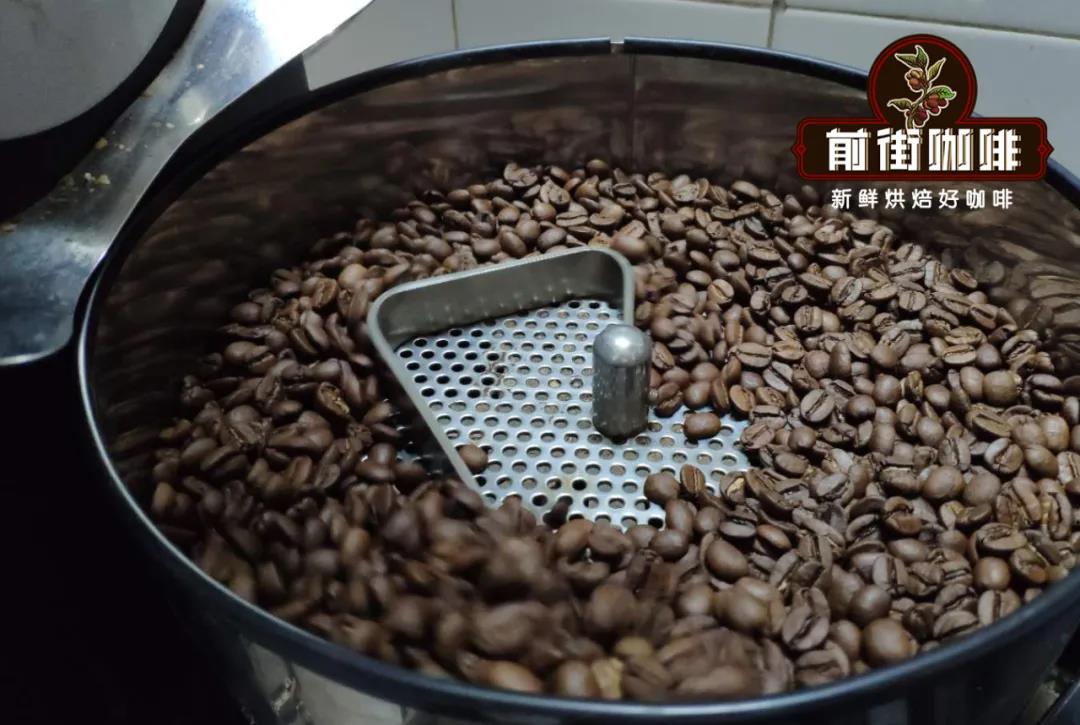
The baking machine Yangjia 800N (300g baking capacity), the furnace temperature 170℃, the firepower 100and the throttle opening 3; the temperature recovery point is 390 ℃, and the throttle is open to 3.5.When the furnace temperature is 140℃, the bean meter turns yellow, the grass smell disappears completely, and enters the dehydration stage. 7: 14 "after dehydration, the firepower and throttle remain the same." 7: 30 "is the appearance of wrinkles and black markings on the bean table, and the smell of toast changes to coffee, which is a prelude to an explosion. At 8 '20`, the blast begins, the throttle opens 4, and the firepower is reduced to 50. After an explosion, the development time is 1: 50 ". At 188 ℃, the firepower is reduced to 30, and the temperature rises to 193.3 ℃.
Suggestion on brewing coffee in Qianjie
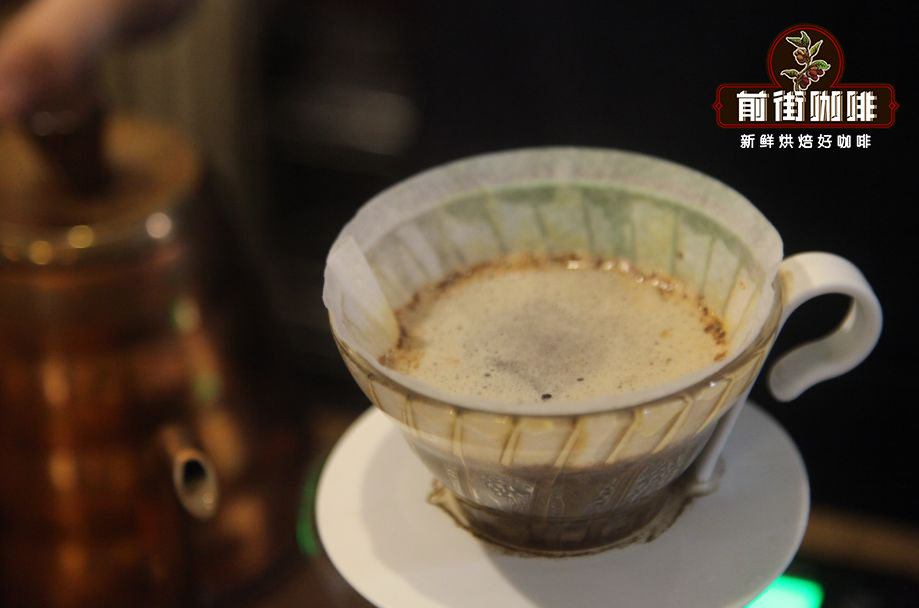
Filter cup: V60 or cake cup
Water temperature: 90-91 ℃
Powder / water ratio: 1:15
Degree of grinding: fine grinding (the pass rate of Chinese standard No. 20 screen is 80%)
Flushing and cooking technique: segmented extraction. Steam with 30 grams of water for 30 seconds, small water flow around the circle to 124 grams for sectional injection, when the water level is about to expose the powder bed, continue to inject water to 228 grams to stop injection, and so on when the water level drop is about to expose the powder bed, remove the filter cup, (the time of steaming starts) the extraction time is 1 minute 39 percent 55 ".
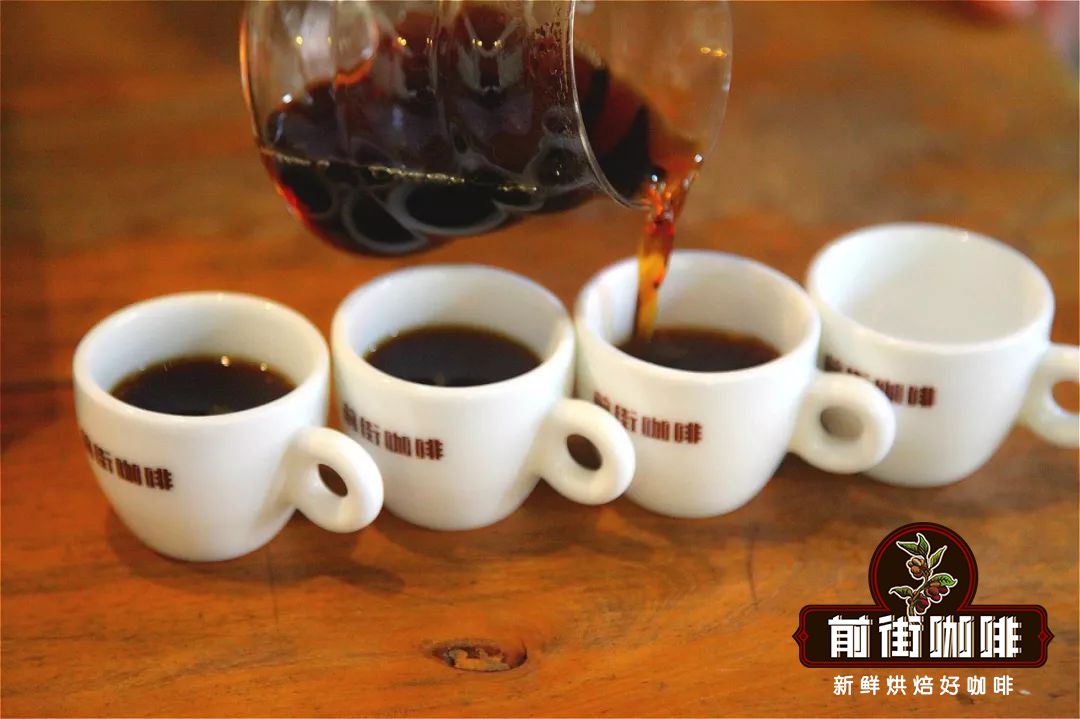
Azaria coffee bean flavor: wet aroma with ripe tomato and flower aromas, imported virgin fruit and black plum flavor, bright acidity, clean and rich taste, outstanding middle sweetness, juicy, raspberry and yellow sugar on the finish, and green tea aroma.
Sassini coffee bean flavor: it smells floral, with sour notes of virgin fruit, citrus, nuts, cream in the middle, brown sugar, cocoa and oolong tea. The flavor level is rich and the flower fragrance is obvious.
For more boutique coffee beans, please add private Qianjie coffee on Wechat. WeChat account: kaixinguoguo0925
Important Notice :
前街咖啡 FrontStreet Coffee has moved to new addredd:
FrontStreet Coffee Address: 315,Donghua East Road,GuangZhou
Tel:020 38364473
- Prev
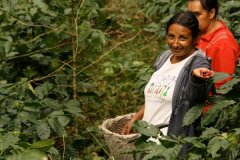
Buenos Aires Manor in Nicaragua introduces the flavor of elephant bean coffee commonly known as the Blue Mountains of Cuba.
Professional barista exchanges please follow the coffee workshop (Wechat official account cafe_style) Buenos Aires manor Haibo climate planting variety introduction Buenos Aires manor is located in the north of the Nicaraguan capital in the town of Dipilto in the province of Bosnia and Herzegovina, close to the south of Honduras, about 1500 meters above sea level, located in the north of the Nicaraguan capital, close to the south of Honduras. Altitude
- Next
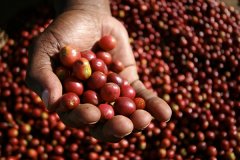
Panama Elida Estate Origin History Awards Washed Cardoba Flavor Description
Professional barista exchanges, please pay attention to coffee workshop (Weixin Official Accounts cafe_style) Best Panama B.O.P over the years, one of the numerous award-winning estates Panama Boquete Elida Estate Washed lot16 Robert Lamastus founded Elida Estate in the early 20th century, when he was a Panama Canal worker.
Related
- Detailed explanation of Jadeite planting Land in Panamanian Jadeite Manor introduction to the grading system of Jadeite competitive bidding, Red bid, Green bid and Rose Summer
- Story of Coffee planting in Brenka region of Costa Rica Stonehenge Manor anaerobic heavy honey treatment of flavor mouth
- What's on the barrel of Blue Mountain Coffee beans?
- Can American coffee also pull flowers? How to use hot American style to pull out a good-looking pattern?
- Can you make a cold extract with coffee beans? What is the right proportion for cold-extracted coffee formula?
- Indonesian PWN Gold Mandrine Coffee Origin Features Flavor How to Chong? Mandolin coffee is American.
- A brief introduction to the flavor characteristics of Brazilian yellow bourbon coffee beans
- What is the effect of different water quality on the flavor of cold-extracted coffee? What kind of water is best for brewing coffee?
- Why do you think of Rose Summer whenever you mention Panamanian coffee?
- Introduction to the characteristics of authentic blue mountain coffee bean producing areas? What is the CIB Coffee Authority in Jamaica?

